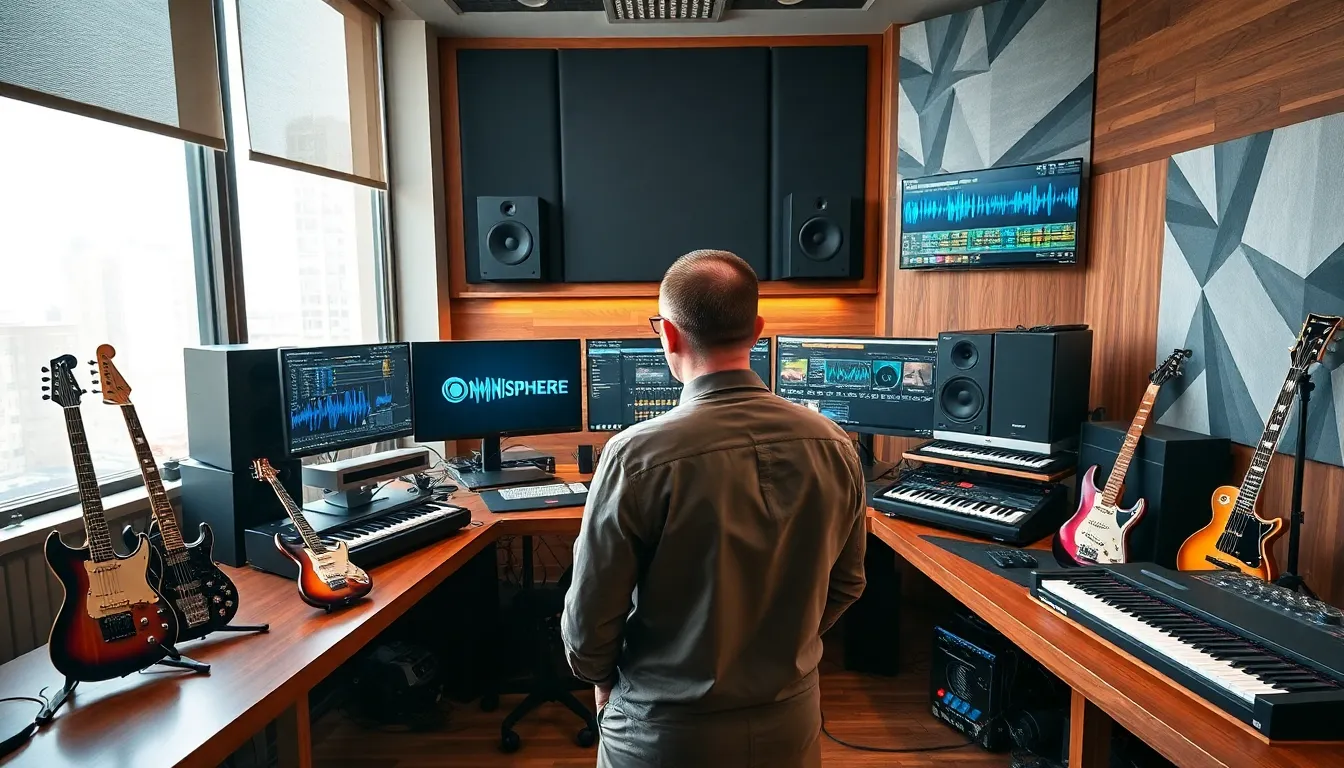Imagine wielding the power of a symphony orchestra from the comfort of your living room, all without shelling out big bucks. Yes, you heard that right. Virtual musical instruments are reshaping the music landscape, making it accessible to anyone with a computer and a little creativity. This guide takes a deep jump into the world of free virtual instruments, where budding musicians can create beautiful melodies without spending a dime. So, grab your headphones and let’s rock.
Virtual Musical Instruments Free

Types of Virtual Musical Instruments
When exploring virtual instruments, one encounters a diverse range of types. Here are some categories worth noting:Synthesizers
Synthesizers allow you to create unique sounds by manipulating waveforms. They’re incredibly versatile, perfect for everything from electronic pop to ambient soundscapes.Samplers
Samplers enable musicians to take snippets from recordings, transforming them into playable sounds. This category is excellent for those wanting to incorporate real-world sounds into their compositions.Orchestral Instruments
Many software options replicate classical instruments, offering orchestral sounds that range from strings to brass, perfect for cinematic productions.Drums and Percussion
Virtual drum kits provide a full range of drum sounds and allow for complex percussive patterns without the need for heavyweight equipment.Virtual Pianos and Keyboards
These emulate the sound and feel of traditional pianos, providing realistic playability for keyboard enthusiasts. The wide variety of categories means there’s something suitable for everyone, whether one is a hobbyist or a professional.Top Free Virtual Musical Instrument Software
Finding quality software doesn’t have to expensive. Fortunately, numerous free virtual instruments are waiting for eager musicians. Here are some top picks:GarageBand
A classic for Mac users, GarageBand offers a user-friendly interface packed with virtual instruments and loops, perfect for both beginners and experienced users.Audacity
While primarily an audio editor, Audacity supports various plugins that can transform it into a powerful virtual instrument platform with diverse sounds.VST Instruments
Many companies offer free VST plugins that work with various digital audio workstations (DAWs). Popular options include:-
- Spitfire Audio LABS: An evolving collection of high-quality instruments.
-
- IK Multimedia SampleTank: A versatile sampler with numerous instruments.
Cakewalk by BandLab
Once known as SONAR, this powerful DAW is completely free and supports VSTs, making it a standout choice for producers looking for virtual instrument capabilities.DSK Music
Specializing in free plugins, DSK Music provides numerous virtual instruments, from pianos to synths, each with its unique sound profiles. With these options, musicians can find the right tools to help them express their creativity.How to Use Virtual Musical Instruments
Using virtual musical instruments can seem daunting at first, but the process is quite straightforward. Here’s a step-by-step guide:-
- Choose Your DAW: Start with a digital audio workstation that suits your needs, something like GarageBand, Ableton Live, or FL Studio.
-
- Download Virtual Instruments: Install your selected free virtual instruments. Follow the installation instructions carefully.
-
- Load Instruments in Your DAW: Open your DAW, and load the instruments through an instrument track. Most DAWs have a simple drag-and-drop function.
-
- Connect MIDI Keyboard (Optional): For a more traditional experience, link a MIDI keyboard to play your virtual instruments. This isn’t a must, but it enhances the experience.
-
- Experiment with Settings: Jump into the software’s settings to adjust sounds, effects, and other parameters until you find something that resonates with you.
-
- Record Your Ideas: Don’t be shy, hit record. Capture your ideas as they flow.
-
- Edit and Mix: After recording, take time to edit and mix tracks for polish. This can make a huge difference in sound quality.
Advantages of Using Free Virtual Musical Instruments
Using free virtual instruments comes with an array of benefits. Here are a few notable advantages:-
- Cost-Effective: As the name suggests, they are free, perfect for musicians on a budget.
-
- Accessibility: Anyone with a computer can explore musical creation, removing barriers associated with traditional instrument purchasing.
-
- Diversity of Sound: Musicians can experiment with various genres and styles, all from the same platform.
-
- Updating & Upgrading: Many free programs receive regular updates, ensuring access to the latest technology and sounds.
-
- No Physical Space Needed: No more concerns about where to store instruments: everything is housed digitally.
-
- Innovative Features: Many free instruments boast features that can inspire creativity, such as built-in effects and customizable options.
Tips for Getting the Best Sound from Free Instruments
To achieve the best sound quality and enhance your musical endeavors, consider these handy tips:-
- Use Quality Headphones: Investing in a decent pair of headphones can make a world of difference in sound clarity.
-
- Optimize Your Workspace: Keep your workspace organized and clutter-free for maximum focus.
-
- Understand MIDI Functions: Learning to use MIDI can unlock a wealth of sound manipulation options, improving the musical experience.
-
- Layer Sounds: Experimenting with layering different instruments can create unique and full textures in compositions.
-
- Experiment with Effects: Don’t shy away from using effects such as reverb or delay, these can dramatically enhance your sound.
-
- Practice Regularly: Like any instrument, the more you practice with virtual instruments, the better your skills will become.


